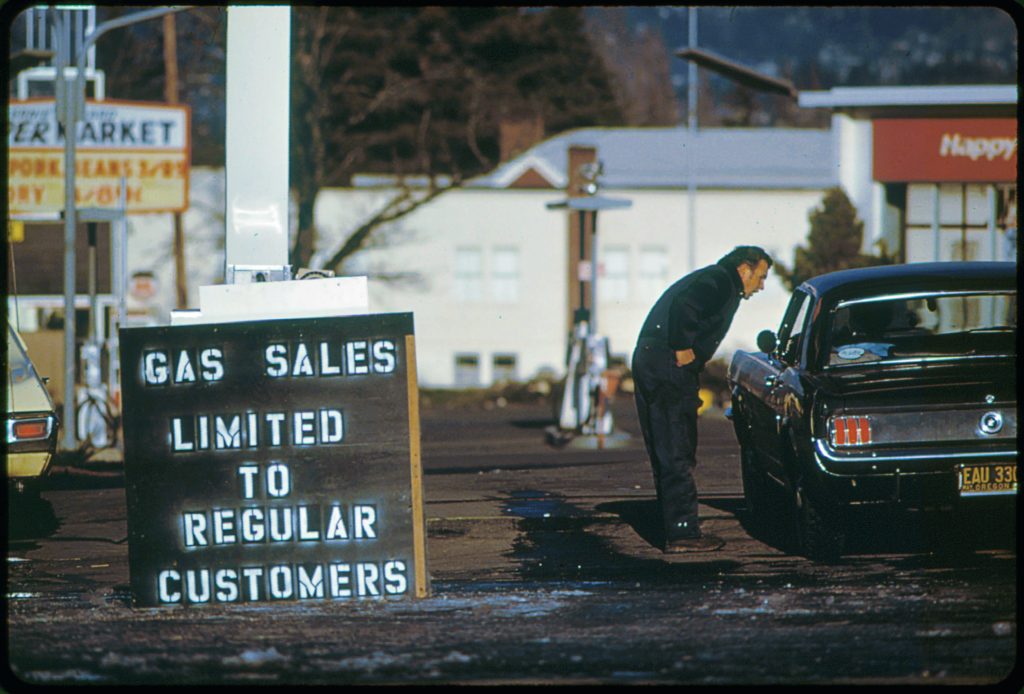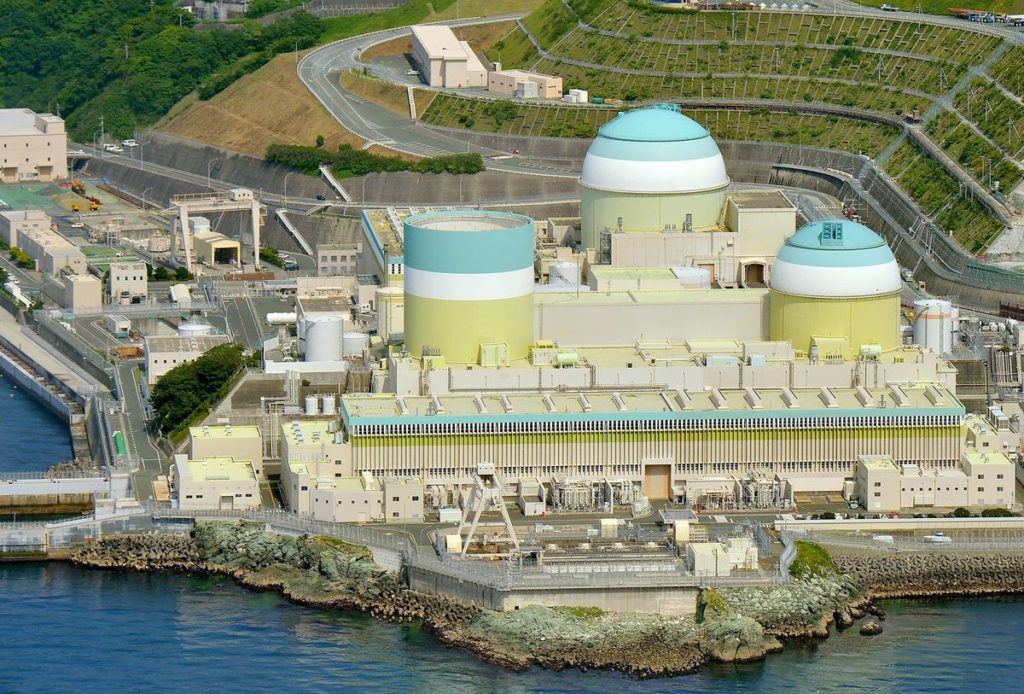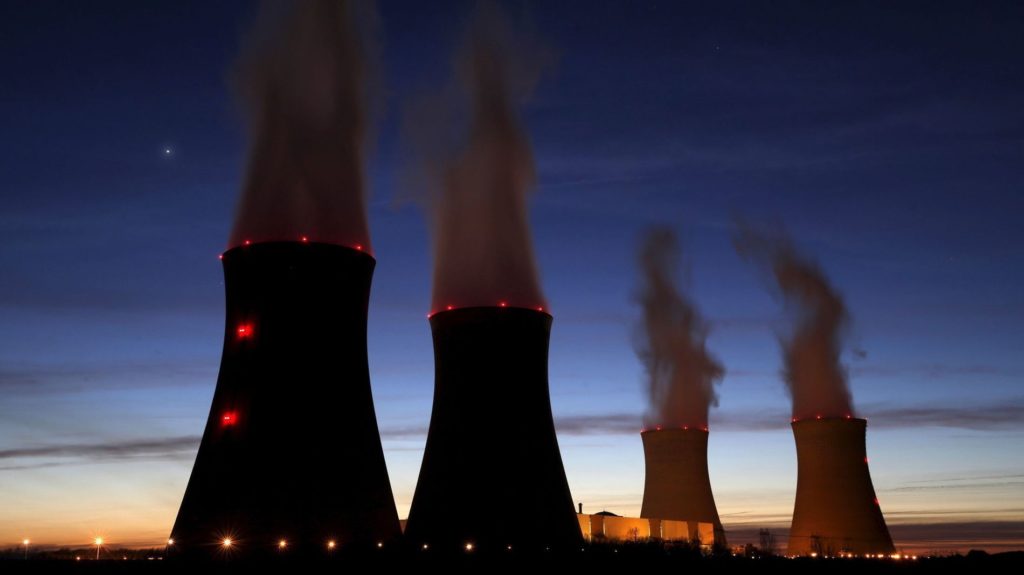
Energy Crisis Through 1973 Prism
back to contentsGlobal gas shortage coupled with rising demand reached critical levels in October and shows no signs of relief. A similar situation occurred in 1973 when the price of oil tripled, and the scale of new nuclear construction increased as a consequence. Let us take a closer look and explore whether the current processes are similar to those half a century ago and whether construction of new reactors is to be expected to grow worldwide.
Causes of the crisis
“A worldwide economic boom, with high inflation and an even higher growth in resource use, was taking place at the same time that American oil reserves were declining and both American imports and worldwide energy use were rising dramatically. Moreover, the new environmental consciousness was beginning to reconfigure public policy in the industrial world and to force changes in corporate strategies.” This is a quote from Daniel Yergin’s bestseller The Prize: The Epic Quest for Oil, Money, and Power about the events of the early 1970s. It is remarkable how similar the circumstances of that time are to the situation that took shape in the autumn of 2021.

The World Bank forecast in June said the global economy would grow 5.6 % in 2021, showing the fastest post-recession recovery for the last 80 years. China is expected to grow most rapidly (8.5 %). Despite a slowdown in the second half of the year, China still believes an 8 % growth is achievable. According to the World Bank estimates, India will grow 8.3 %, the US 6.8 %, and Argentina 6.4 %. The estimate for Turkey is 5 %, but its president speaks about a ‘double-digit growth.’ As for Russia, the IMF has raised growth expectations for its GDP from 4.4 % to 4.8 %.
The filling level of European gas storage facilities, which is estimated as ‘extremely low,’ speaks volumes about the rising demand for gas as the most popular source of energy now. In September, Europe’s largest gas storage site, Rehden, was only 9.47 % full. Consumption on the other side of the planet is growing, too. In October, China imported 9.38 million tons of natural gas, up 24.6 % year-on-year.
Curiously, gas now and oil half a century ago are comparable even if viewed from the environmental perspective. “The impact of environmentalism on the energy balance was manifold. The retreat from coal was accelerated, and reliance on cleaner-burning oil grew,” Daniel Yergin writes. Until recently, gas was considered to be a transitional energy source on the way towards a carbon-free future. However, early November showed signs of natural gas to become the source of energy — at least in Germany, which has always been a trendsetter in the European energy market (see details below).
Solutions to the energy crisis proposed by authorities are also similar. “In April 1973… Akins, now from his White House post, tried again. He prepared a secret report filled with proposals to counter the growing energy threat, among which were expanded coal use, development of synthetic fuels, stepped-up conservation efforts (including a stiff gasoline tax), and much-increased research and development spending in order to get beyond hydrocarbons. His ideas were met with incredulity.” Hydrogen production technologies developed today are planned to serve the same purpose. China, which has already faced electricity shortages, proposes to prioritize domestic consumers and supply power to facilities in foreign ownership secondly. Japanese media also discuss how electric power should be distributed when it is not enough to go round. “According to Sumiko Takeuchi from the International Environment and Economy Institute, we should consider the possibility of requesting large plants to suspend operation,” Fuji News Network (fnn.jp) writes.
Crisis effect
The 1973 crisis manifested itself in a reduction of supply and a resulting feverish demand for oil. “Fear and uncertainty were pervasive and had a self-fulfilling effect: both oil companies and consumers frantically sought additional supplies not only for current use but also for storage against future shortages and the unknown. Panic buying meant extra demand in the market,” Daniel Yergin writes. The oil price rose 600 % as compared to the pre-crisis level in early October 1973.
On October 1, 2021, the price of gas at London’s stock exchange exceeded USD 1,200 per 1,000 cu m although it had not climbed above USD 400 for almost eight previous years and even went under USD 100 per 1,000 cu m in mid‑2000. Now there is understandable anxiety on the market, accusations against Russia as a major gas supplier, rebuttals of such accusations, meetings, shutdowns of smaller utility companies, suspensions of production, and heated debates over what to do next.
Nuclear in focus
New nuclear construction was seen as one of the ways to reduce dependence on oil after the 1973 crisis. It was the strategy chosen by France and Japan. According to IAEA PRIS, France commissioned 43 nuclear reactors in the 1980s. First concrete for all of them, even those launched in 1980, was poured after 1973. Japan built 17 reactor units over the same period. In the USA, first concrete for 31 out of 47 reactors brought online in the 1980s was also poured after the 1973 crisis.
A logical question emerges: can the current situation in the energy market lead to similar consequences for the nuclear power industry as it happened half a century ago?

We contacted Kissinger Associates to ask Henry Kissinger this question, after all he played a key role in solving the global energy crisis after October 1973 (as you may know, the Watergate scandal broke out at the very same time and, having shaken the public confidence in President Nixon, restricting his capacity to influence the situation). Unfortunately, Mr. Kissinger did not answer our questions.
Other experts whom we asked agreed that this scenario was very likely because environmental and economic factors overlapped.
“You are basically right. The world is clearly moving to a nuclear renaissance although it is not made public. Executive Vice President of the European Commission for the European Green Deal Frans Timmermans said that the EU would help Bulgaria resume its nuclear project. The UK and France announced they would make nuclear power a foundation of their net zero strategy. Even Japan believes that re-launch of its nuclear power plants is key to achieving carbon emission targets,” says Ukrainian political expert Dmitri Dzhangirov.

“I agree with your conclusion. Judging by what Ursula von der Leyen and Frans Timmermans have said and written recently, European politicians seem to change their attitude regarding nuclear technology as gas and electricity prices are growing,” Elena Anankina, Senior Analytic Director for Ratings and Infrastructure at S&P Global Ratings Moscow, replied.
The events of October and November show that large-scale construction of new nuclear reactors might well become a global reality.
China has the most ambitious plans. According to Bloomberg, Beijing is going to build at least 150 reactors in the next 15 years. “The effort could cost as much as USD440 billion; as early as the middle of this decade, the country will surpass the US as the world’s largest generator of nuclear power,” Bloomberg writes.
President of France Emmanuel Macron said in his address to the nation on November 9 that France would resume construction of nuclear reactors for the first time in decades. New power reactors combined with renewable energy sources will ‘ensure energy security and sufficient supply of power.’ Earlier in October, he said nuclear stations could be used to produce hydrogen by electrolysis with zero emissions. A small modular reactor and two ‘mega factories’ will be built for that purpose.
Also in October, authorities of ten European countries (Bulgaria, Croatia, Finland, France, Hungary, Poland, Romania, Slovakia, Slovenia, and the Czech Republic) published a joint statement in large European newspapers calling for a wider use of nuclear energy to protect people from the volatility of energy prices, and inclusion of nuclear energy in the European Taxonomy. “It is absolutely essential for nuclear energy to be included in the European Taxonomy by the end of 2021,” the statement says. The authors of the letter support their requirement with multiple benefits of nuclear generations. “It is a clean, safe, independent and competitive source of energy. It gives us, Europeans, a chance to continue developing the industry with a high added value, create thousands of qualified jobs, strengthen our environmental ambitions and make Europe autonomous in terms of strategy and power. Let us not lose this critical opportunity.”
New nuclear construction is discussed in the UK, too. “The government has said that nuclear is vital for its plans to reach net-zero emissions by the middle of this century, but has struggled to get large scale projects built. The latest push for atomic power comes as Britain struggles with an energy crunch, with surging natural gas and electricity prices increasing the risk of blackouts this winter,” Bloomberg writes, analyzing the plans to resume construction of the Wylfa nuclear station in Wales.
However, not all European countries share the conviction that it is necessary to construct new reactors. “I do not think that political decisions to phase out nuclear power in Germany, Belgium and Switzerland can be reversed or stopped,” Elena Anankina believes.
Germany’s unwillingness to retain nuclear generation even at the expense of its energy system reliability may be explained by direct access to, and prioritization of, natural gas. “Germany will embark on massive construction of new gas-fired power plants. Those plants will serve to back up renewables after the nuclear phase-out and accelerated shutdown of coal-fired capacity. This seems to be a strategic plan of the next yet-to-be-formed German government, and it is clearly supported by large businesses in the country,” Deutsche Welle reports. “We will continue using gas for a long time yet and building new gas-fired power plants because they will help us ever transition through the period of change,” DW quotes Germany’s chancellor-in-waiting Olaf Scholz as saying. Here are the figures: gas generating capacity should grow from the current 31 GW to 74 GW in 2030 to meet the growing demand.

Nuclear power plants have an advantage, though — they are not connected to a gas pipe, Dmitri Dzhangirov notes. A nuclear station can be built anywhere and thus be more than just interesting to the other countries dealing with appetites of German gas traders.
The competition between gas and nuclear should factor in capabilities of national industries and local plants. In other words, if a country can locally produce most of the machinery and equipment for a nuclear power plant, it will benefit more from developing nuclear power. This is one of the arguments voiced by Japanese media in support of nuclear revival in the country. “Local content in Japanese nuclear power plants is about 99 %, while nearly 85 % of solar panels is imported from China,” says an article published on plaza.rakuten.co.
Summing it up: just like 50 years ago, the energy crisis caused by growing demand on the back of economic growth seems to have resulted in the decision to build new reactors in the countries that have sufficient resources and competencies. Other countries, which do not have broad public support of nuclear yet (like Japan or Kazakhstan) or lack financial resources and technological competencies (like Central European countries), need more supporting factors. First, they need to increase public awareness and confidence. Second, nuclear energy should be included in the Taxonomy as this will facilitate access to subsidized finance.
And what about the USA? Making decisions about new construction stumbles upon the absence of a company that can build a nuclear power plant or possess reactor technologies that can be offered to customers (utility companies). No nuclear plant has been constructed recently in the USA. Watts Bar 2 is the only new reactor brought online in the 21st century. Watts Bar 1 was put in operation as long ago as 1996. The situation might change, though as US President Joe Biden signed a USD 1.2 trillion infrastructure bill in mid-November, including USD 6 billion to be spent to prevent early retirement of nuclear power plants and USD 2.5 billion on new nuclear power project.
It must be thus admitted that nuclear technology can help achieve sustainable development goals that comprise energy security, carbon neutrality, and clean air and water. What we need is technological and political neutrality. And let those properly equipped build new nuclear power plants.




